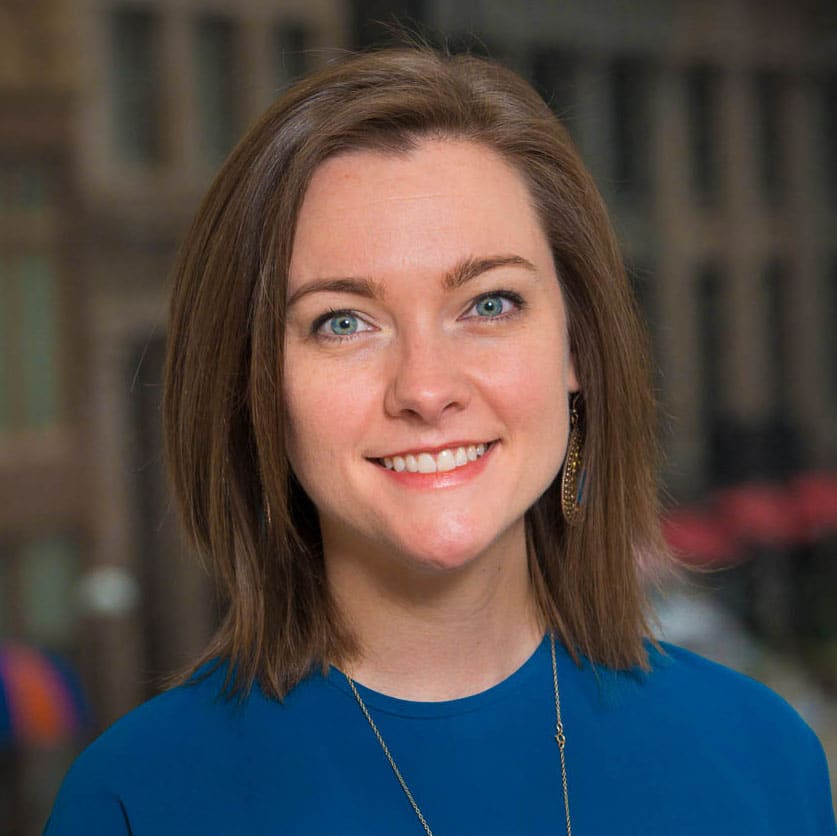We live among systems. We always have and always will. When we reflect on the past or anticipate the future, we need to notice the systems at work and analyze their dynamics. Doing so will help us understand how injustice and inequity have been able to persist and will help us uncover opportunities to create liberatory education futures.
KnowledgeWorks’ newest forecast, Imagining Liberatory Education Futures, offers us the chance to look at where we’ve been and where we might be headed with a systems mindset.
A systems iceberg
Taking a systems mindset means looking at what is happening beneath the surface. Events or patterns are rarely random. They are the byproducts of underlying structures and beliefs. The systems iceberg is a common tool to help illustrate these layers.

As an example, think about how students collaborate in a classroom. Perhaps a group of students is struggling to work together. First, we can aim to understand whether that event is part of a pattern. How have the students interacted in the past? Does the current struggle reflect the way these or other students collaborate more generally?
If an event is part of a larger pattern, we can look one layer deeper at what might be contributing to the pattern. Continuing the example, what classroom structures have been put in place to support collaboration? What barriers to collaboration might exist, either because of the physical environment or classroom expectations? Perhaps the room is organized in a way that makes conversation difficult or the students are expected to be silent most of the time. These are all subtle components of the system that would have a real impact on how the classroom operates.
Next, we can look at beliefs, which drive systemic structures. What do the teacher and the students believe to be true about collaboration? Do they value it? Are they afraid of it? Do they believe that they can do it? Uncovering the lowest layer of the iceberg can illuminate why the structures that exist are there, why the patterns continue to repeat and why the events we observe are happening.

Going through this exercise can help us understand what is happening that we may not be able to see but that is nonetheless creating the conditions for what we can see. Once we can name what is happening at each layer of a system, we can clarify what we hope to change and find opportunities to shift the system at deeper levels instead of just addressing surface symptoms.

Looking Beneath the Surface: The Education Changemaker’s Guidebook to Systems Thinking introduces education stakeholders and changemakers to the theories, language, mindsets and tools of systems thinking for the purpose of informing approaches to systems change.
Learn more >>
The systems iceberg and KnowledgeWorks forecast
The Imagining Liberatory Education Futures forecast looks both back and ahead. It explores some ways in which education systems have been oppressive in the past and the present and some ways in which they might become liberatory in the future. When reading the forecast, we can apply the systems iceberg to think through how those past and present realities may have come about and how those future possibilities may emerge.
A brief history of oppressive education
This section of the forecast describes how, despite many well-intentioned attempts at reform, education systems have been slow to change and remain oppressive, particularly for children of color and low-income children. As you read this section, ask yourself the questions below.
- What events and patterns does this section describe?
- What structures were in place that allowed those events and patterns to occur?
- What beliefs allowed those systems to be put in place? What ways of seeing the world made those structures seem reasonable?
- Where do you see those events and patterns, structures, and beliefs persisting today?
Four scenarios for liberatory education futures
The forecast includes four scenarios that describe possibilities for anti-oppressive and liberatory education in 20 years. Each scenario is a story about what might exist and highlights the status of liberatory education, power dynamics and the potential for liberatory education to spread. As you read this section, ask yourself the questions below.
- What events and patterns does each scenario describe?
- What structures might be in place to allow the events and patterns to occur?
- What beliefs might allow those systems to be put in place? What ways of seeing the world might make those structures seem reasonable?
- Where do you see any of these possible future events and patterns, structures, and beliefs already at work today? Which ones might you want to enable, and which ones might you want to shift?
Looking beneath the surface to create change
Our education systems do not operate the way they do by accident. They are the result of beliefs, structures and patterns that have led to the events we see. In the same way, education systems will not become liberatory by accident. By applying the tools of futures and systems thinking, we can explore what we hope to see and what must exist beneath the surface to make it so.
Imagine liberatory education futures through four scenarios in our sixth anchor forecast.







